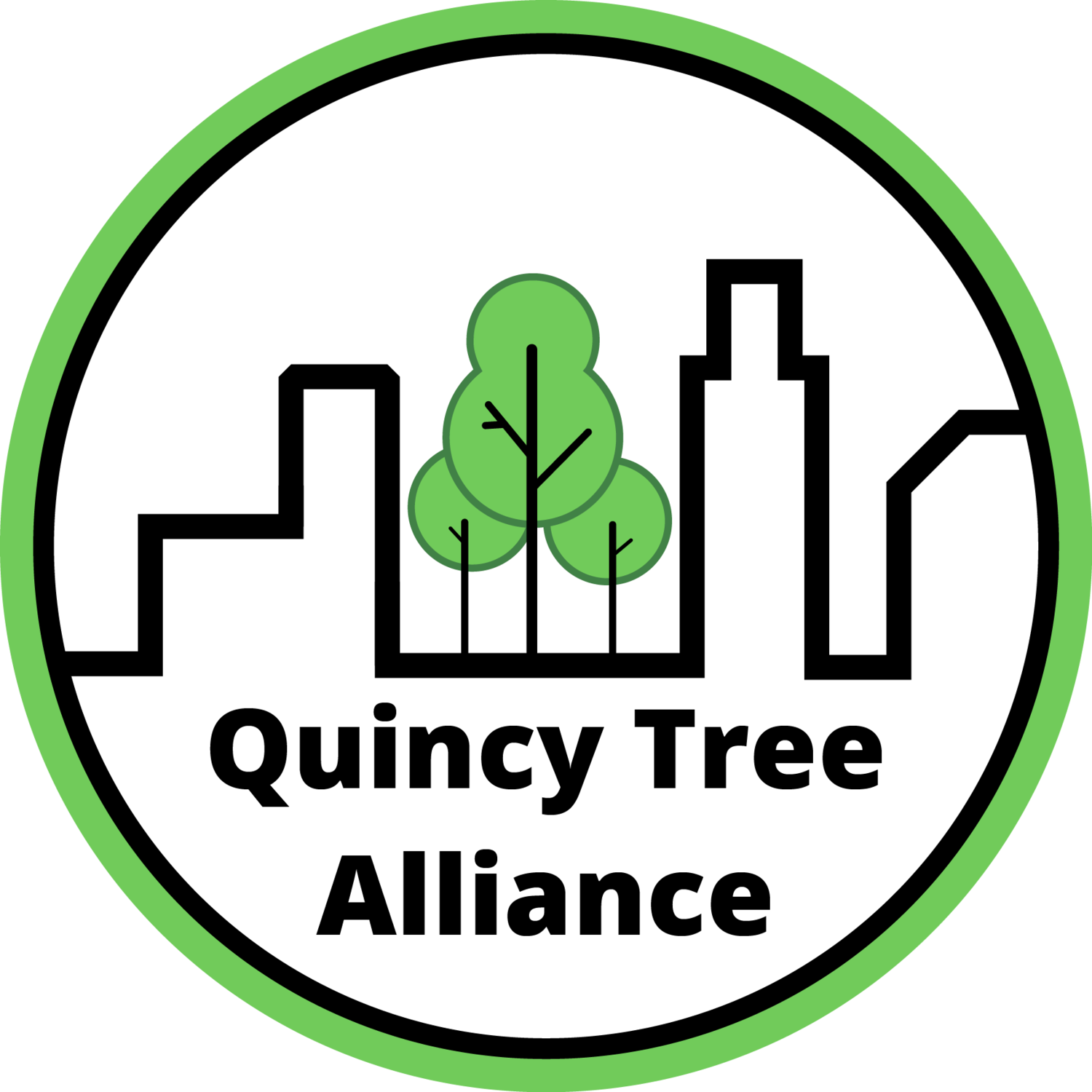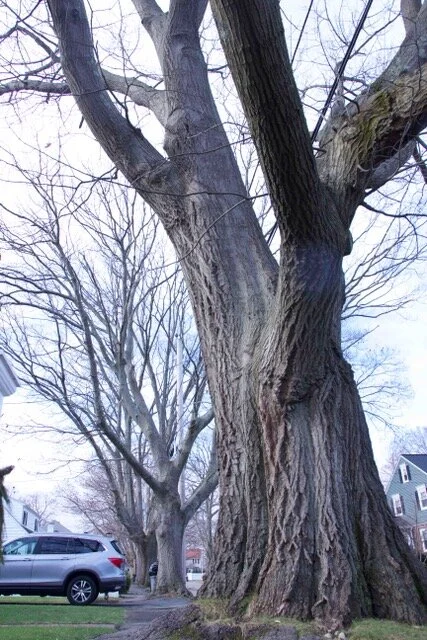Historic treasures should be preserved
A red oak tree estimated to be 196 years old has been recommended for removal on Sims Road (Credit: Julie Mallozzi)
Imagine a machine first built in John Adams’s time that has chugged along without a hiccup for 200 years. It would undoubtedly be treated with kid gloves, and every effort would be made to preserve and protect it. Perhaps the Quincy History Museum would display it so that people could stand in awe of the engineering marvel and feel a visceral connection to the past in the rhythmic shifting of its components.
Well, such a machine actually exists – right here in our fair city. Not only that, but this machine has been proven to make people happier, healthier, and wealthier, to prevent flooding, and to fight climate change. What is this astonishing contraption? It’s hiding in plain sight, an unsung hero that makes a city street feel like part of a neighborhood: a mature tree.
Trees improve air quality, lower stress, boost moods, reduce crime levels, and improve home values. They also lower heating and cooling costs, reduce stormwater runoff, and remove the greenhouse gas carbon dioxide from the atmosphere, storing the carbon as wood and releasing the oxygen back into the air.
Mature trees are especially powerful weapons against climate change. As William Moomaw, an emeritus professor of environmental policy at Tufts, said in a Yale magazine interview: "We’ve seen a lot of interest lately in planting more trees…. These are great things to do, but they will not make much of a difference in the next two or three decades because little trees just don’t store much carbon," he said. "The most effective thing that we can do is to allow trees that are already planted, that are already growing, to continue growing."
After learning about the importance of mature trees to the climate, I was saddened to learn that the city is considering cutting down three trees estimated to be between 100 and 200 years old on Sims Road, near Beechwood Knoll School.
I know there will be cases where mature trees will have to be taken down for safety reasons – perhaps on Sims Road. But I believe that tree removal should be done only as a last resort, after every measure to preserve the trees has been exhausted.
One concern raised at a recent hearing about the Sims Road trees was sidewalk safety, as the roots have lifted the surrounding walkways. The city’s tree warden, Chris Hayward, mentioned that one way of addressing the issue is to get easements from homeowners to build sidewalks that curve around tree trunks and onto their land. Others on the call mentioned another workaround: building sidewalks that rise and fall like bridges over the roots.
Mr. Hayward seemed to feel that some of these solutions would be too time consuming or costly, and certainly, city budgets are tight – particularly now, in a global pandemic.
But I would argue that mature trees are so valuable to our community – which has suffered tens of millions of dollars in storm damage in recent years – that spending money to safely preserve the trees would be cheaper than the costs associated with losing them. These costs include the damage from increased flooding – because trees slow and absorb stormwater runoff, and the loss of tax revenue from decreases in home values. (In 2008, a US government study estimated that street trees increased property tax revenues for the city of Portland, Oregon, by $13 million per year.)
Mature trees are also unmatched in their ability to soak up and lock away atmospheric carbon dioxide. The cheapest mechanical tree scientists are working to develop (which would remove carbon dioxide from the air much faster than a live tree but would not be able to store it) would cost at least $50,000.
Let’s not be short-sighted when weighing the costs of maintaining Quincy’s mature trees. We literally cannot buy machines that do as much for our, and our planet’s, health and safety. Let’s treat them as the national treasures they are and work to survey and preserve them alongside the Adams birthplaces and the Old House at Peacefield. Email quincytreealliance@gmail.com if you’d like to be part of this effort!
Maggie McKee
Chair, Quincy Tree Alliance

